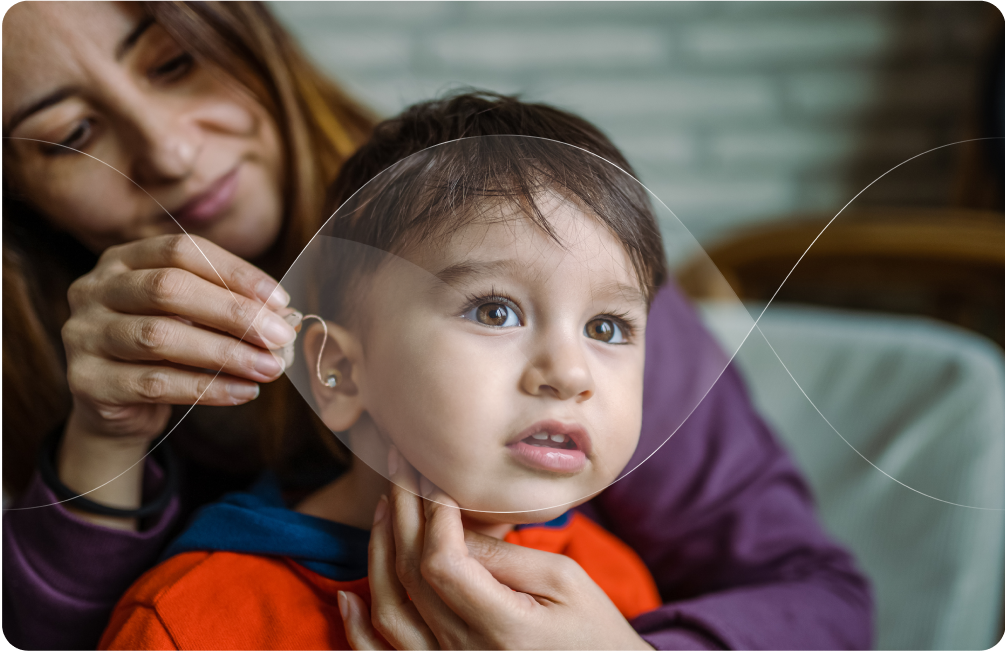For decades, treatment for congenital and genetic hearing loss has largely relied on devices such as hearing aids and cochlear implants. While these technologies have helped millions, they don’t address the underlying genetic causes of hearing loss. Now, thanks to breakthroughs in gene therapy, pharmacogenomics, and AI, a new wave of personalized hearing care is emerging—one that has the potential to restore hearing, prevent loss before it occurs, and improve diagnostic accuracy like never before.
Gene therapies
In May 2024, British toddler Opal Sandy was announced to have successfully had her hearing restored through a new gene therapy targeting low levels or absence of a protein caused by variants in the OTOF gene. Born deaf as a result of auditory neuropathy, eighteen month old Opal was administered the treatment as part of the CHORD study. The first-of-its-kind therapy boosts levels of otoferlin protein to restore the ability of inner ear cells to effectively communicate with the brain and enable perception of sound.
Using adeno-associated virus (AAV) vectors to deliver the therapy directly into Opal’s ear, researchers were able to administer the treatment in an operation which took less than 20 minutes. Following a successful procedure, Opal is reported to have almost perfect hearing.
The success of this early stage trial has sparked hope for families living with otoferlin-linked hearing loss, and is paving the way for new gene therapies which target other genetic hearing loss variants.
However, further research needs to be done to understand the mid- and long-term impacts of such treatments, how long improvements last and which hearing loss subtypes stand to benefit most from this approach.
Pharmacogenomics and hearing loss
Not only do genetic screening initiatives help to tailor genetic hearing loss treatment, they can also be used to identify risk.
Gentamicin is an antibiotic commonly used to treat infections in newborn babies. However, despite it being used to safely treat 100,000 babies per year in the UK, one in 500 babies carry a genetic variant which can lead to permanent hearing loss if they are given the drug. In babies with this variant, gentamicin enters inner ear cells, causing damage and resulting in hearing loss.
However, a simple genetic test can be used to establish if a baby is vulnerable to this type of hearing loss. Using a non-invasive cheek swab, the test can be run in under half an hour to establish if the risk variant is present and if the baby should be given a different type of antibiotic in order to protect their hearing while still effectively treating infection. Researchers estimate that this rapid test could save the hearing of 200 babies in England alone every year.
Technical innovations
Newly developing technical innovations are also changing the hearing loss landscape, helping improve the efficiency of assessment, diagnostic, and counseling processes and ultimately leading to enhanced health outcomes.
Machine learning
Machine learning (ML) approaches hold promise for improving ear health, speed of diagnosis and ability to accurately identify risk. As demand for hearing loss screening, diagnostics, counseling, and treatment increases, ML algorithms have the potential to both create more effective hearing models than human audiologists and present an effective solution for addressing increased demand by enabling the rapid assessment of high volumes of patient data. Early research has shown that ML offers significant advancements in the accuracy and efficiency of hearing assessments. Capable of analyzing large datasets, ML methods can enhance diagnosis using pattern recognition to analyze audiograms and, potentially, speech.
Integration of electronic health records
In tandem with ML approaches, the integration and analysis of aggregated (anonymized) electronic health records stand to enable precision medicine approaches to genetic hearing loss, providing a powerful tool for predictive diagnosis and intervention recommendations. For example, a deep learning (DL) model called “Auto-Audio,” which utilizes audiogram databases from the Department of Otolaryngology electronic medical record system at the Sunnybrook Health Sciences Center in Toronto, Canada, has been able to interpret audiograms and give a diagnosis with up to 97.5% accuracy and at a much faster speed than humans could.
Smart devices
AI technologies also have the potential to help develop more versatile and user-friendly hearing aids, enabling personalization of features (such as preferences around background noise filtering). Additionally, integration of hearing devices with smartphone apps is helping individuals build a more personalized and curated hearing experience which is tailored to their individual needs and preferences, as well as enabling alerts about any changes in hearing health. Such innovations have the potential to enable enhanced monitoring and management of hearing health as well as create a highly personalized experience.
The future of hearing care is personalized
Advances in gene therapy, pharmacogenomics, and AI-driven technology are changing the way we diagnose, treat, and manage hearing loss. As research continues, these innovations have the potential to restore hearing, prevent loss before it occurs, and improve patient care on a personalized level.
To dive deeper into the latest breakthroughs and what they mean for the future of hearing health, download our latest whitepaper:


